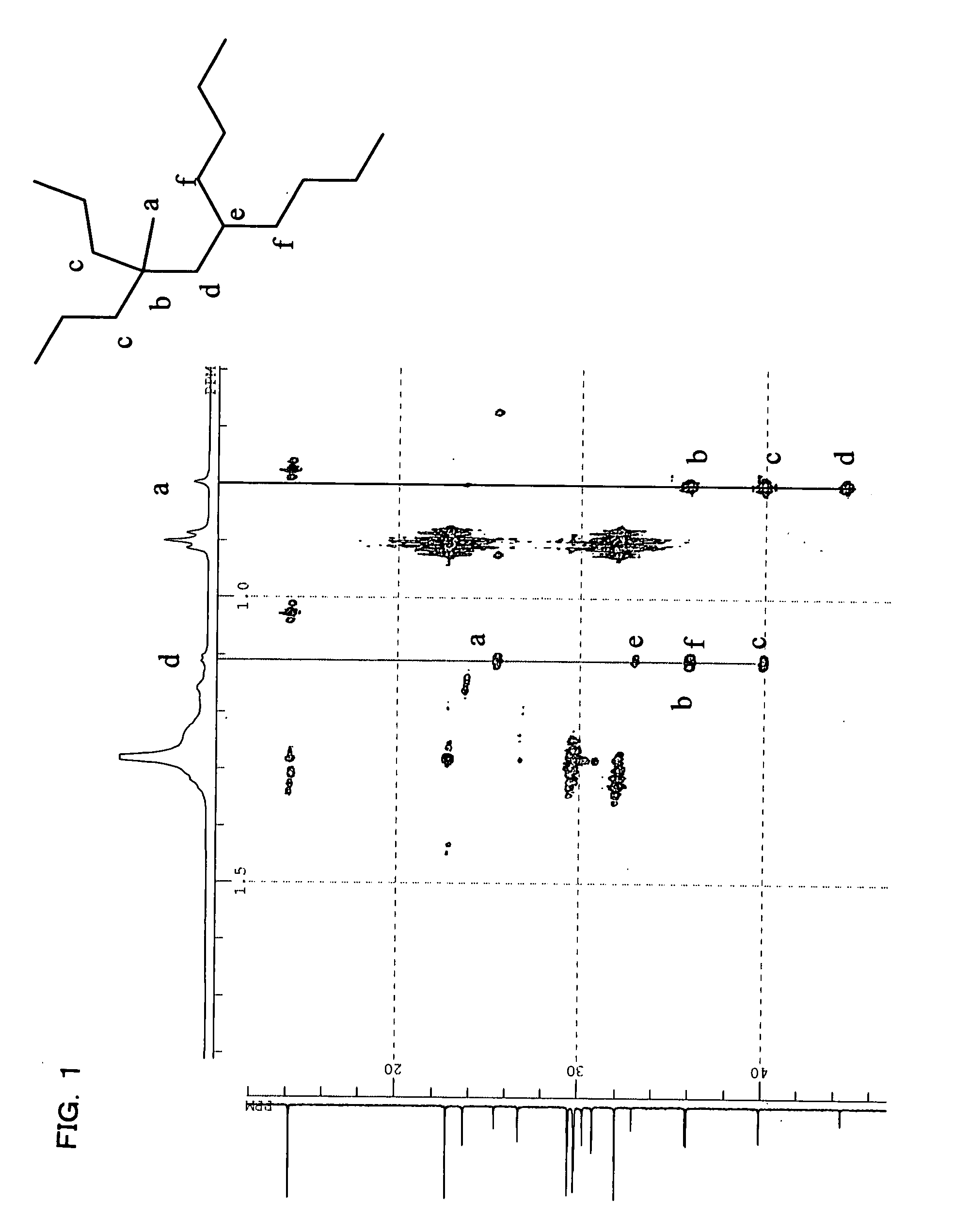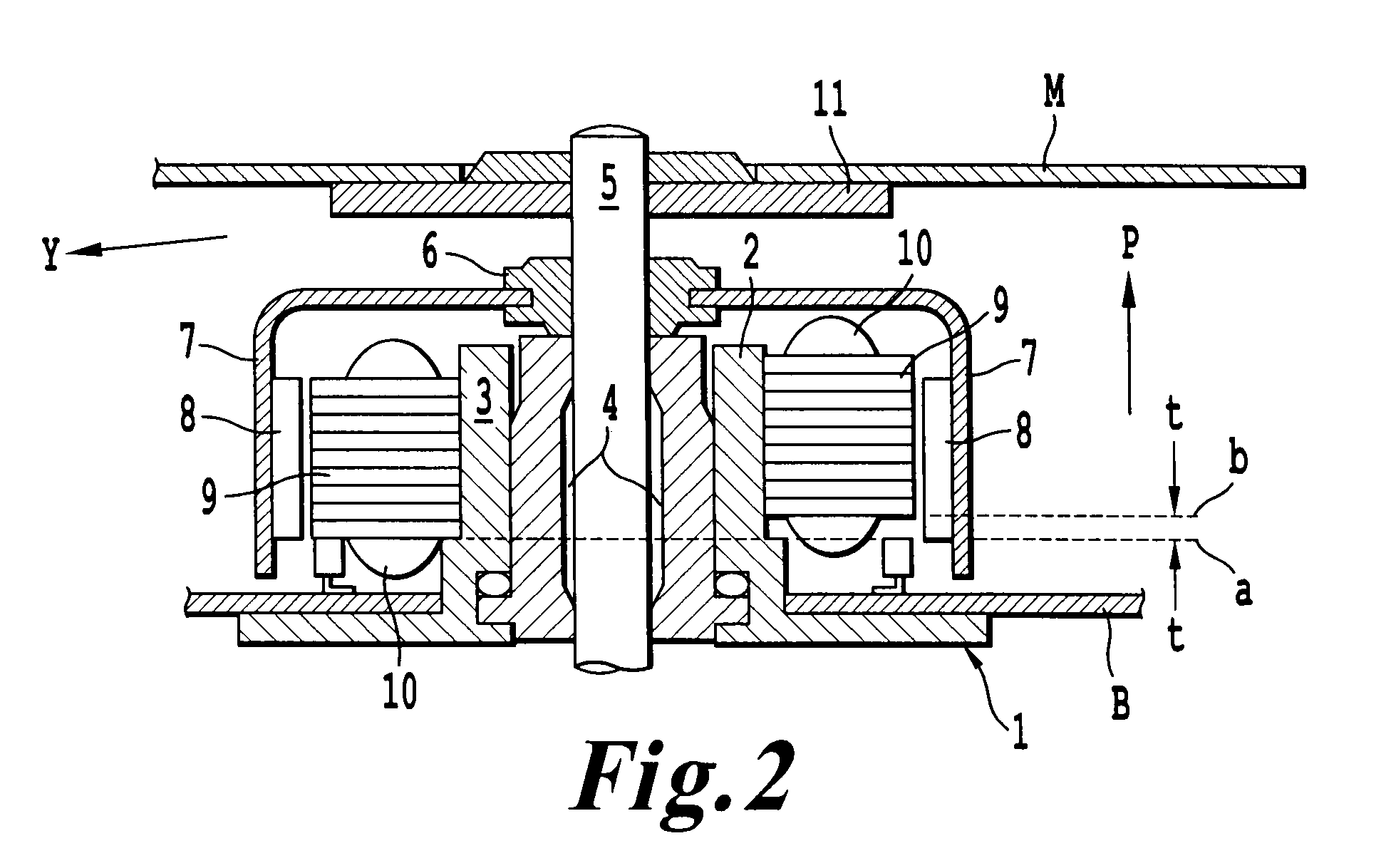Process for producing saturated aliphatic hydrocarbon compound, and lubricant composition
a technology of saturated aliphatic hydrocarbon and lubricant composition, which is applied in the direction of hydrocarbon oil treatment products, instruments, horology, etc., can solve the problems of increased oil consumption, decreased power efficiency, and sudden change in low-temperature startup, and achieves low evaporativity, good thermal stability, and low temperature fluidity
- Summary
- Abstract
- Description
- Claims
- Application Information
AI Technical Summary
Benefits of technology
Problems solved by technology
Method used
Image
Examples
example 1
[0258](1) Dimerization of 1-decene with Metallocene Complex
[0259]In a three-necked flask (content volume of 5 L) purged with nitrogen, 3.0 kg of 1-decene, 0.9 g (3 mmol) of bis-(cyclopentadienyl)zirconium dichloride (also referred to as zirconocene dichloride) provided as a metallocene complex, and 8 ml (converted to Al) of methyl aluminoxane (manufactured by ALBEMARLE Corporation) were sequentially added in this order, followed by stirring at room temperature (20° C. or less). A reaction solution was changed from yellow to dark reddish-brown. After 48 hours from the start of the reaction, the reaction was terminated by the addition of methanol. Subsequently, an aqueous hydrochloric acid solution was added to the reaction solution to wash an organic layer. After that, the organic layer was subjected to vacuum distillation, thereby obtaining 2.5 kg of a distillated fraction (decene dimer) with a boiling point of 120 to 125° C. / 26.6 Pa (0.2 Torr). The distilled fraction was subjected ...
example 2
[0276](1) Dimerization of 1-decene in the Presence of Metallocene Complex
[0277]In a 5-L three-necked flask purged with nitrogen, 1-decene (3.0 kg), bis-(pentamethyl cyclopentadimethyl)zirconium dichloride (0.17 g, 0.4 mmol), dimethyl anilinium salt of tetrakispentafluorophenyl borate (0.34 g, 0.4 mmol), and triisobutyl aluminum (manufactured by Toso Aquzo Co., Ltd., 40 mmol) were sequentially added at room temperature and then stirred at a reaction temperature of 80° C. After reacting for 8 hours, the reaction was terminated by the addition methanol. Subsequently, an aqueous hydrochloric acid solution was added to the reaction solution to wash an organic layer. Next, the organic layer was subjected to vacuum distillation, there by obtaining 1.2 kg of a distilled fraction (decene dimer) having a boiling point of 120 to 125° C. / 26.6 Pa (0.2 Torr). When the distilled fraction was subjected to a gas-chromatic analysis, the concentration of the dimer was 98% by mass and the ratio of diva...
PUM
| Property | Measurement | Unit |
|---|---|---|
| mass | aaaaa | aaaaa |
| viscosity index | aaaaa | aaaaa |
| temperature fluidity | aaaaa | aaaaa |
Abstract
Description
Claims
Application Information
 Login to View More
Login to View More - R&D
- Intellectual Property
- Life Sciences
- Materials
- Tech Scout
- Unparalleled Data Quality
- Higher Quality Content
- 60% Fewer Hallucinations
Browse by: Latest US Patents, China's latest patents, Technical Efficacy Thesaurus, Application Domain, Technology Topic, Popular Technical Reports.
© 2025 PatSnap. All rights reserved.Legal|Privacy policy|Modern Slavery Act Transparency Statement|Sitemap|About US| Contact US: help@patsnap.com



